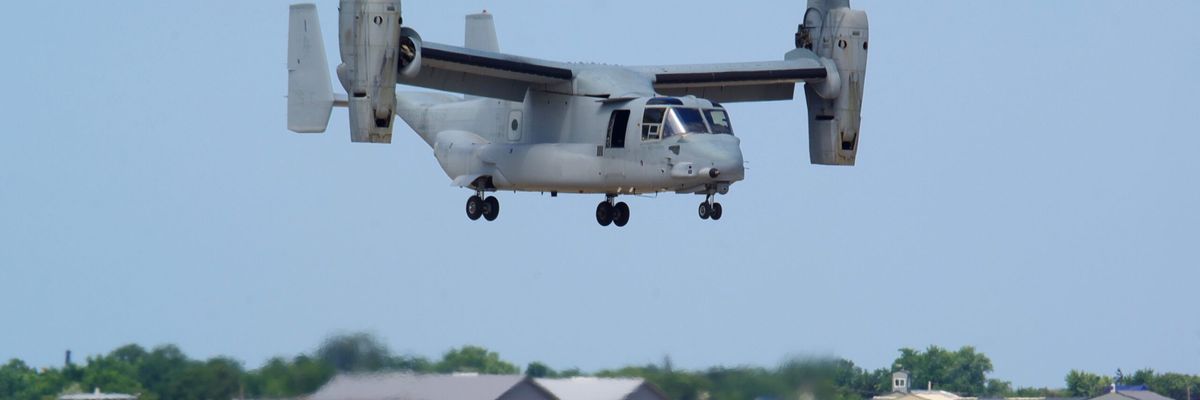A V-22 Osprey crashed during a training exercise in Australia on Sunday, killing three Marines and leaving an additional five in critical condition. The accident is the third deadly crash including an Osprey since 2022.
The tragic incident has reinvigorated debate over the Osprey, which has been plagued by controversy since its prototype was first adopted during the Reagan administration. The aircraft’s unique “tiltrotor” design, which allows it to take off like a helicopter and fly like a plane, has often led to cost overruns and safety issues in its two decades in service.
“It’s probably time to retire the Osprey and look at a new tiltrotor/VTOL option for the Joint Force,” said Michael DiMino, a fellow at Defense Priorities.
“I’d never step foot in one of these things,” wrote military analyst and Air Force veteran Patrick Fox in a post on X, the social media platform formerly known as Twitter.
The cause of the crash is “under investigation,” according to a press release from the Marine Corps’s rotational force in Darwin, Australia, where the crash occurred. The V-22 was “transporting troops during a routine training exercise,” the statement noted.
The Air Force briefly grounded its entire Osprey fleet last year following a string of engine malfunctions that led to crashes or near misses. The Marines and Navy also grounded an “undisclosed number” of their V-22s last year while they tried to repair a component that had helped cause the malfunctions, according to Defense News.
The rash of V-22 crashes is part of a trend of increased U.S. military plane accidents in recent years. A 2020 congressional report, which found that 198 soldiers and civilians had died in crashes since 2014, argued that the increase in accidents was primarily due to weak safety oversight and a years-long drop in average flight hours for military pilots, which has left them less prepared to react to rare but potentially disastrous mechanical issues.
Flight hours have continued to decrease in the intervening years, a problem caused in part by the Pentagon’s focus on purchasing big-ticket items while skimping on maintenance costs for existing platforms.
Poor record-keeping and inventory practices have only worsened maintenance issues. As the Government Accountability Office noted in May, weapons maker Lockheed Martin has lost over 2 million spare parts for the F-35 fighter jet since 2018, further driving up the plane’s costs while also driving down flight hours. But the military continues to argue that the F-35 program is a necessary and effective replacement for America’s previous generation of fighter planes.
It should perhaps be no surprise, then, that the Pentagon has already set its sights on a shiny new tiltrotor aircraft. The Department of Defense announced last year that it would replace the Black Hawk helicopter — one of the military’s primary workhorses for moving people and cargo — with the V-280, a tiltrotor aircraft that strongly resembles the V-22. It remains to be seen whether it will finally fix the problems that have plagued the Osprey.















